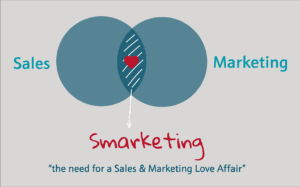 Most successful companies and corporations have professional sales and marketing teams. If we were to summarize the work of marketing specialists, we could say that it involves creating products and producing content (advertisements, resources, visual elements, etc.) that generate high value leads and which sales will use to close business operations and deals.
Most successful companies and corporations have professional sales and marketing teams. If we were to summarize the work of marketing specialists, we could say that it involves creating products and producing content (advertisements, resources, visual elements, etc.) that generate high value leads and which sales will use to close business operations and deals.
If sales and marketing are correctly aligned, then fewer resources are needed, mistakes are minimized and the success factor in meeting assigned objectives will be high.
The truth is, however, that getting this alignment to happen is hard, since the two departments are apt to blame and find fault with each other. Altogether, some 80% of executives think that their sales and marketing teams are not working together (source: State of Inbound 2017).
The theory behind achieving this alignment is initially clear; organizations will doubtless have some common goals, and certainly among the top – if not the top – is growth of sales for the company. The entire corporate machinery works towards this end, but operational strategies and their coordination are not always unified between the departments. Sometimes, in order to generate more sales and low conversion rates in the funnel, sales must do a real juggling act with the product portfolios they receive from marketing.
Much of this has changed for the better in many companies in recent years. Sales and marketing processes have been unified to create optimum conditions to reach the market, minimizing conflict and ensuring quality lead generation.
This resulted in the concept of Smarketing (sales+marketing), focused on achieving this integration through communication, teamwork and the unification of work tools (especially CRM and bigdata).
Smarketing isn’t about simplifying internal processes – it’s about increasing collaboration and implementing a combined strategy that seeks to offer the market what the company is good at, thereby ensuring high levels of success.
The main advantages it provides are:
- Optimal solutions are generated for customers, which translates into more sales opportunities.
- Innovation gives better results when business opportunities are better identified.
- More realistic short-term roadmap (market-oriented).
- Increased knowledge of the competition’s go-to-market.
- New products adapt better to the market, prolonging their life cycle.
Given these benefits and their potential impact on company income statements, it is no surprise that management encourages and supports this line of work. Generally, the first step to integrating Smarketing in a company is for the CMO and CSO to reach agreement on a vision and joint strategy for each business segment. However, it will also be necessary to:
- Define target customers and their needs across the two departments. Designing solutions and content for the customer will help to close sales faster.
- Use a CRM system with appropriate metrics, which combines data from various sources (queries, business opportunities, customer tracking and closing sales).
- Feedback: establish a constant dialogue between the sales and product area managers in order to track new market trends and business opportunities and even lost operations.
Finally, the sales and marketing departments should see each other, within the company’s strategic plan, as allies where each performs a function to improve company results and where leads are shared. It’s not a competition, but rather a joining of forces to facilitate effective collaboration so that the whole company wins.



























